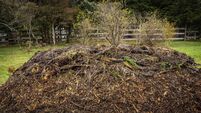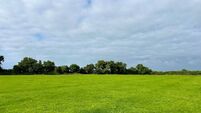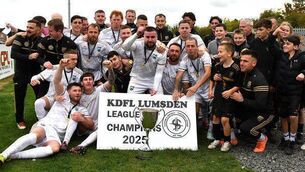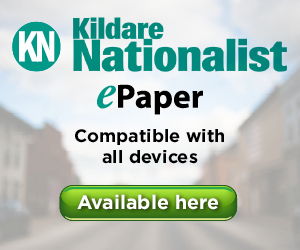High-flying Hosie's influence on Athy
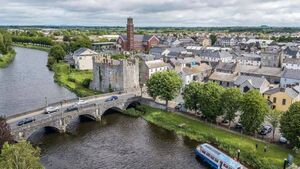
Athy
I HAVE made reference in previous columns to Henry Hosie, founder of Industrial Vehicles Ireland Limited known locally as I.V.I. in or about 1932 with Freddie Thompson of Carlow.
His other commercial venture was the opening of Athy Picture Palace in Offaly Street some years earlier. He was then known as Captain Hosie having joined the English army in response to Kitchener’s call for recruits at the start of World War 1.
He was sent to France in 1914 and was invalided back to Ireland in 1916. He later returned to army duties and was based in Scotland where he became officer in charge of machinery at the Scottish area forage department.
He was promoted to the rank of captain during that time. He also served in World War II and was promoted to the rank of major.
In 1947, he relinquished his commission having passed the age limit for reserves and was granted the rank of colonel. He was known thereafter as Colonel Hosie. His son Terence, who served in the Royal Engineers was killed in action in Italy on the 23 November 1941 aged 26 years.
Following my references to Henry Hosie in previous columns, I received a few years ago a very detailed email from a John King of London in relation to Hosie’s involvement with Irish aviation and the part he played in the attempt to establish an airline company providing flights from Dublin to England.
Hosie joined the Irish Aero Club, which was formed in 1928 and four years later, he was responsible for organising an Irish Aero Club’s event in Cardenton, Athy. In the afternoon of Sunday, 14 August 1932, aeroplanes arrived for the first time in Athy landing in a field owned by the Minch family.
Several hundred attended including the Lord Mayor of Dublin, the legendary Alfie Byrne, who had been flown from Baldonnel by the chief instructor of the Aero Club. There were three planes at the event, which was reported as follows by the : ‘There were several events including crazy flying and the balloon bursting competition’.
The report noted ‘an amusing and exciting interlude when an old woman was seen to enter one of the planes and while the pilot (Captain Hosie) was getting his helmet adjusted, the machine was seen to stagger across the field and rise off the ground, missing the hedge by inches. The spectators were then treated to an exhibition of crazy flying and after one or two attempts, the machine was brought back to terra firma’.
On the 23 September 1932, the weekly magazine ‘Flight’ noted that Hosie’s company had been appointed agent in Ireland for the de Havilland company in Ireland. Three days later, Hosie was elected to the management committee of the Irish Aero Club. In March of the following year, he wrote on I.V.I. headed notepaper to the Department of Industry and Commerce enquiring about the availability of Collinstown, a disused pre-war military aerodrome, for use as a commercial air service. The reply from the department was not helpful.
For several weeks from April 1933, Hosie was busy trying to make arrangements for the airline company Midland and Scottish to use the aerodrome at Cobh. The Cork Evening Echo recorded how Captain Hosie and the chief instructor of the Irish Aero Club made a flying visit to Cobh in one of the Club’s Gypsy Moth aircraft, which landed at Ballincollig at 10am, having left Athy at little over one and a half hours earlier.
The newspaper report indicated that Hosie had arrived in Cork to inspect possible sites for a southern airport. He made a further visit to Cork, flying again to Ballincollig with officials from the UK to inspect possible sites for a Cork airport.
They inspected sites at Ballincollig, Lakelands and near Cobh and had discussions with the Cork city manager, Philip Monahan.
Following this latest visit, Hosie was described in the as ‘well known in County Kildare and an esteemed Athy resident’ asserting ‘that he deserved much credit for his work in the interest of aviation in Ireland’. That same month, Hosie was elected to the committee of the Irish Aero Club.
By July 1933, Hosie was instrumental in completing arrangements for the Midland and Scottish Airline Company to open a twice-daily air service from Cork to Dublin with a link to Brittain.
The flight which lasted one hour and fifteen minutes, cost one pound ten shillings on 15 August 1933. This was the first attempt by an Irish citizen to give the country a regular air service. Not long afterwards, Hosie’s influence in the developing Irish air service began to be eclipsed by a fellow member of the Irish Aero Club and solicitor, Sean Ó’hUadhaigh. The latter had important political contacts which Hosie did not have. Ó’hUadhaigh would become Chairman of the Aero Club in 1935 and Chairman of Aer Lingus when it was formed in 1936.
Hosie appears to have thereafter given more attention to his I.V.I. business for in August 1933, following correspondence in the Evening Herald regarding the value of pneumatic tyres to farm carts, he wrote a letter supporting the use of such tyres claiming that there had been no improvement for farm carts for the previous fifty years.
Within four months, the reported that rubber-tyred farm carts were being built by the I.V.I. Company in Athy. He later disposed of his interest in the Athy Picture Palace to Holmes of Portlaoise who in turn sold out to the Roscrea Cinema company.
The early years of the I.V.I. seemed to have concentrated on the supply of industrial vehicles and would appear to have developed the foundry business during the early years of the Second World War. Colonel Hosie, who was a very important employer in Athy, died on 26 October 1967.
